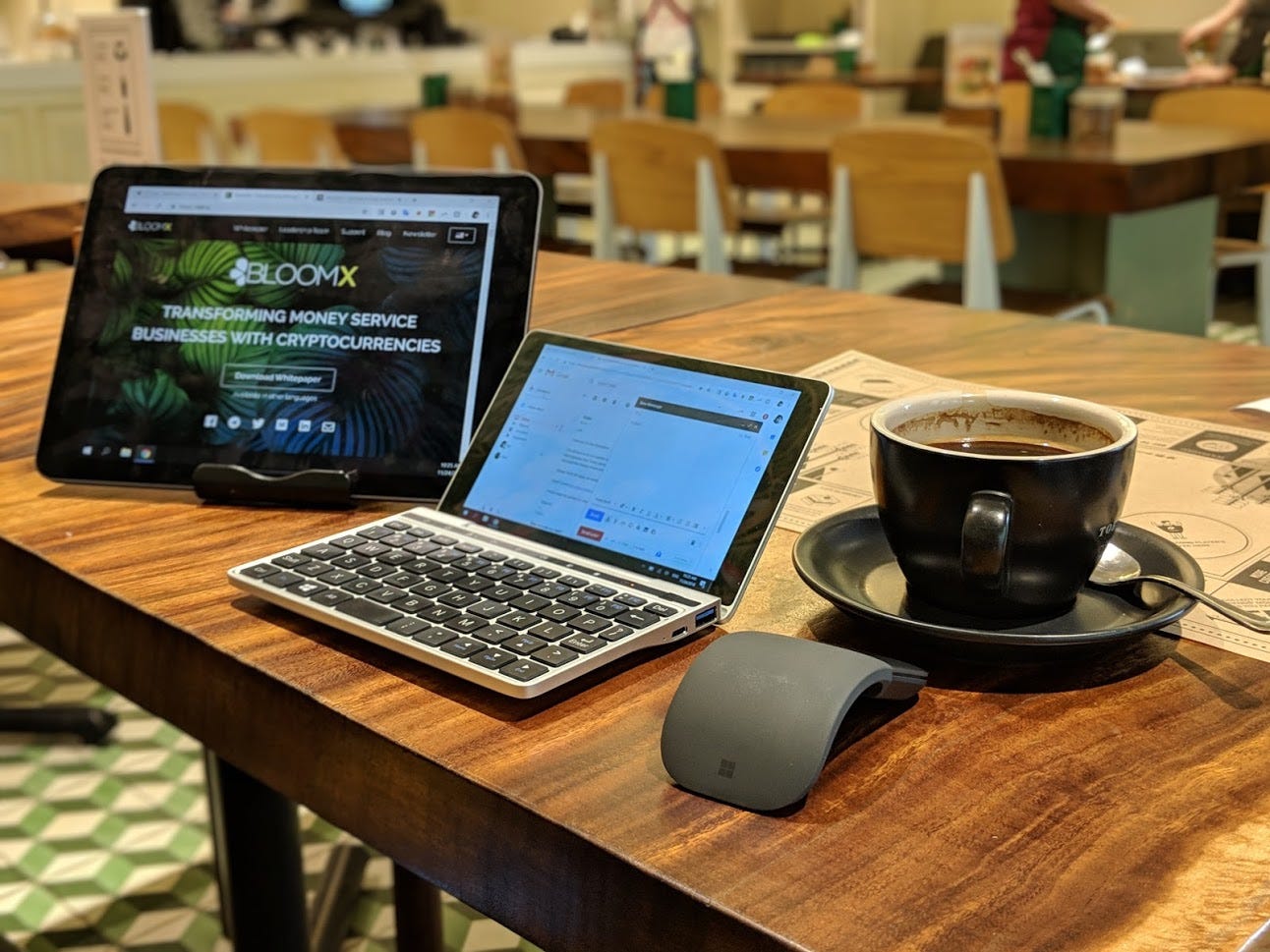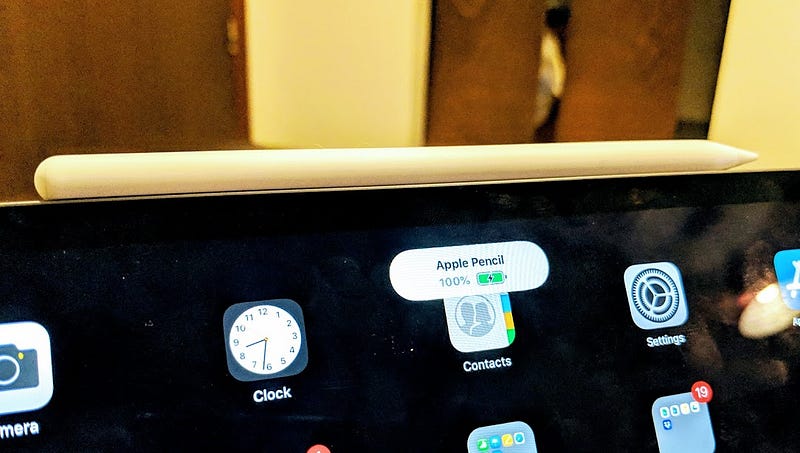
I’m obsessed with size and weight.
Now before you start hashtagging, I’m talking about travel weight, i.e., the total mass and/or volume that I have to lug around with me in order to get my work done.
First, some context: I’ve clocked a little over 200,000 kilometers of air travel so far in 2018. That works out to just under 300 hours in pressurized metal boxes hurtling through the lower atmosphere at 500 kph, sardined in with 400 other equally uncomfortable humans of varying shapes and sizes. In situations like this, every square inch of additional space, every gram in weight reduction, and every minute saved makes a huge difference. To my sanity, if nothing else.
I like to tell myself that I’m striving for efficiency; I want to be productive when I’m in transit. But over the last couple of years it’s evolved into something bigger. It’s become this personal quest to see just how small and light I can get everything to be.
And having gone through half a dozen different iterations over the years, I think I’ve found a mobile setup that is both really optimized for my needs, but is also wonderfully weird.
When I stumbled upon the GPD Pocket 2 on Indiegogo a few months ago, I felt like I had made the discovery of the year. On paper, the Pocket 2 is a technical marvel: the power and form factor of a Windows 10 laptop in the same footprint as a Kindle and the same weight as an iPad. Specifically: it sports an Intel Core m3–7Y30 1.6Ghz processor, 8gb of RAM, 128gb SSD, a 7″ inch 1920×1200 touchscreen … all in a smooth aluminium chassis weighing just over one pound.

I got mine for $600, and it arrived from the GPD offices in Shenzhen a bit over a week ago. At 7.5″ by 4.5″, barely larger than the Samsung Galaxy S9+ pictured above, GPD is clearly taking liberties when it refers to the Pocket 2 as a “laptop.” In truth, it more closely resembles the old-school palmtops of the late 90’s, except that it’s running a full-fledged operating system with enough power to handle modern office apps and high-def media.
 The palmtops of yore
The palmtops of yore
In case you were wondering: it does in fact fit into your pants pocket, if a little uncomfortably. I did find that it slipped perfectly into the inside pockets of my Bluffworks blazer though.
Now, you don’t get to these kinds of dimensions without some tradeoffs. The most obvious, and likely the most challenging, is the diminutive keyboard. Not only are the keys really, really small, but the layout is … somewhat creative.
I’m writing this article on the Pocket 2, and I don’t expect to be hitting more than 30 words per minute at my current level of familiarity. (Granted I’m also perpetually jetlagged, so 30wpm is more than my brain can even really formulate.) On the plus side, the keys themselves are quite nice. They’re miniaturized chocolate keys, equivalent in clickiness and key travel to the old Macbook Airs — the 2014 version of which I believe to be the finest 13″ laptop ever made.

The Pocket 2 also doesn’t have a trackpad. Instead, it has an updated version of IBM’s retro eraserhead on the upper right corner of its keyboard. You’ll need it, too. Most of the Windows 10 interface elements work great on a touchscreen, but they were never designed to be rendered on something this small. The eraserhead ends up being a lot more precise than your (relatively) gargantuan fingertips.
Battery life is also not breaking any records, but I did manage about 5 hours of heavy use. This shortcoming is offset somewhat by the fact that the Pocket 2 can charge off the same small battery pack as all of my other devices — a huge advantage when you’re waiting around in a terminal with no sockets in sight. (To be fair, you can do this with the Apple Macbook and other ultralights too, as long as you have the larger capacity packs from Anker and the like.)
All of that aside, this machine is a minuscule bundle of joy. Its size and weight are so negligible that I could attend an all-day conference with it in my coat pocket and rest assured that I have access to a “full” computer at a moment’s notice.
For serious work, I’d go back to my desktop-replacement machine at home of course, but for brief, time-critical work sessions, it’s perfect. I literally whipped it out to do some spreadsheet-editing while standing in line at airport immigrations the other day. Try doing that with your Dell XPS.

In terms of raw performance, the Pocket 2 is quite reasonable. In truth, it’s about as capable as any normal laptop, except that it’s a third of the usual size and weight. Its internals are the same as the entry-level 2017 Surface Pro, so it can handle office apps, HD video, casual games, light photo-editing. The question of course is, would you actually want to do any of those things on such a small screen for longer than a few minutes here and there.
Well, that’s where the iPad Pro comes in.
There’s this joke that iPads are so good that you will find yourself flying through 90% of your work on them. The only problem is that it’s been the exact same 90% since 2010.
With each new generation, the hardware gets better and better, but you still can’t use the iPad as your only computer. Unfortunately, it’s iOS that continues to be the primary constraint.
Part of it is by design: Apple wants to limit the things you can do on the iPad to make the experience more reliable and consistent. Part of it is purely physical: your hand obscures your view when you interact with the screen, so working with small details (a Google Sheet, an infographic, or any text document longer than a few thousand words) becomes an unnecessary struggle.

That said, when the iPad is good at something, it’s great. There’s no better device out there for consuming media, and flying through 3D maps of unfamiliar cities remains one of my favorite pastimes. The new Pencil is a marvel, and continues to narrow the gap between Apple and the industry-standard Wacom in terms of fidelity.
The new iPad Pros are gorgeous, powerful devices, and when used with the GPD Pocket 2, we’re able to circumvent some of the shortcomings of the tablet form factor.
The secret here lies in Duet Display, an awesome little iOS app that allows your iPad to be used as a secondary monitor when connected via USB to any Mac or Windows laptop. With Duet running, my Windows desktop can extend to two touchscreens with zero lag and very little quality degradation.

The best part of this strategy is that the iPad Pro or the Pocket 2 are both great standalone machines in their own right. When I’m drawing, I pull out the iPad (check out Paperlike to upgrade the iPad drawing experience even further), and when I’m writing lengthy emails or mucking around with spreadsheets, I reach for the Pocket 2. And when I need to do a lengthier work session with lots of context switching, I connect the two devices over USB and have over 4000px by 1200px of screen area to work with.
It’s a really flexible approach, and with a total combined weight of 2.2lbs, it’s lighter than all but the most svelte of laptops. And because it shares the same USB-C port as all of my other devices, there’s the distinct advantage of only needing one charger and one battery pack.
GPD’s success this year has set off a pint-sized Renaissance. Its biggest competitor is the One Mix Yoga 2, a convertible 2-in-1 with a stylus and a similar footprint, and which is available for preorder now. The Cosmo Communicator is a prototype that blends Android and Linux in a single handheld that is heavily inspired by the Nokia 9000 Communicator from way back in 1996.
 The Mini PC
The Mini PC
Other projects have decided to innovate beyond the clamshell form factor altogether. One Indiegogo project from earlier this year raised over $1M and promised a 5″ Mini PC that you only needed to hook up to a keyboard and mouse. Other projects, like the Sirius B, offer a pocket-sized dockable computer that doesn’t have a screen at all.
As transistors get ever smaller and cheaper, I think these niche devices are going to become a lot more commonplace. Their size makes it unlikely that they’ll be used as anyone’s primary machine, but there are at least a handful of situations where they are conceivably superior to your average 13-inch, 3-pound notebook. (Economy class air travel, all-day networking events, and any situation where your personal space is extremely limited.)
However other people end up using the GPD Pocket 2, I’m quite certain I’ve already discovered my absolute favorite thing about it: I can finally use a laptop on an airplane without worrying that it will be crushed when the person in front reclines their seat.
###
